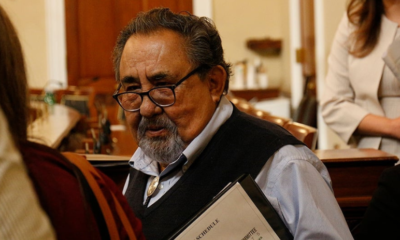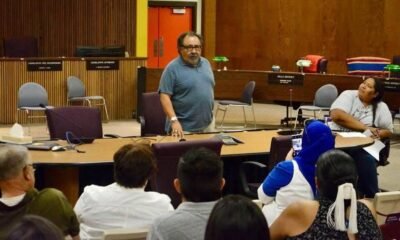Entertainment
Arizona’s Indigenous Communities Face Severe Strain from Climate Change

Climate change is bearing down heavily on the Indigenous peoples of North America. In Arizona, for example, Phoenix temperatures nearly reached 120 degrees this month. This severe heat, hovering around 90 degrees even during lows, presents a harsh reality. The summer of 2024 is already competing with last year’s extreme heat in parts of Arizona.
In the Phoenix Valley, numerous tribes live alongside a high Native population in the city, predominantly from among the 22 federally recognized tribes in the state. Dr. Vafa Matin from Native Health Phoenix has noted the severe risks these temperatures pose, particularly to vulnerable groups such as the elderly, children, and those with chronic illnesses.
“Indigenous people in the area are at significant risk of heat-related illnesses,” Matin stated. He emphasized that prolonged exposure to such high temperatures could lead to conditions life-threatening if not addressed promptly. From 5:00 a.m. to almost 8:00 p.m., the relentless sunlight and heat present a significant health threat.
Alarmingly, heat-related deaths among Native Americans are rising in Maricopa County, which includes Phoenix. Data from the National Center for Health Statistics for the years 2018 to 2022 show a worrying upward trend in fatalities:
Year | Deaths
2018 | 23
2019 | 20
2020 | 30
2021 | 62
2022 | 58
“High temperatures place additional stress on the cardiovascular system, heightening the risk of heart attacks and congestive heart failure,” Matin indicated. Individuals with preexisting conditions are particularly at risk, and the situation is exacerbated for Indigenous communities facing respiratory challenges. The extreme heat can worsen conditions such as asthma and emphysema, making it even harder for affected individuals to breathe comfortably.
The situation isn’t much different in the broader state. While regions like Flagstaff and the Navajo Nation experience slightly cooler weather, nearby Las Vegas recently hit 120 degrees. Parts of California have seen similar temperatures, creating dangerous conditions everywhere.
Dehydration from excessive sweating and insufficient fluid intake is another significant concern. Clinicians often encounter mildly dehydrated individuals who face symptoms like fatigue, disorientation, and difficulty walking. Matin explains that addressing dehydration is crucial, especially for vulnerable Indigenous communities.
Efforts to combat these issues include public education and community outreach. A Frybread powwow on July 13, co-hosted by the health center, aims to inform attendees about coping with extreme heat. Events like these emphasize the importance of hydration and creating shaded areas to reduce heat risk.
State officials are also taking action. Gerilene Haskon, a Diné and tribal liaison in the Arizona Department of Health Services, highlighted the state’s cooperation with tribes on infrastructure concerns like internet access, transportation, and water supplies. The lack of affordable energy has prevented many from adequately cooling their homes.
Climate conditions have affected food systems, leading to reduced access to traditional foods and livestock due to droughts. This affects the Indigenous communities’ ability to maintain food security and agriculture. Flooding during the monsoon season adds to these challenges.
Arizona’s response includes a comprehensive extreme heat preparedness plan, a cooling center map, and mobile cooling units. These measures aim to provide respite during periods of intense heat. Additionally, funds have been allocated for improving the electric grid and supporting shelters during extreme weather events.
Looking ahead, the National Weather Service predicts temperatures of 116 degrees in Phoenix, with daytime highs remaining above 109 for the next ten days and nighttime lows in the high 80s and low 90s. This pattern is expected across several states, with many areas facing significantly above-average temperatures.
Nationwide, numerous tribes will endure the heat. Washington, Oregon, California, Nevada, and western Arizona will experience temperatures 10 to 30 degrees above normal. In Texas, millions are without power following Hurricane Beryl, adding to the heat’s danger. Death Valley, California, home to the Timbisha Shoshone, will hit 126 degrees, with no relief in sight for the upcoming days.
















